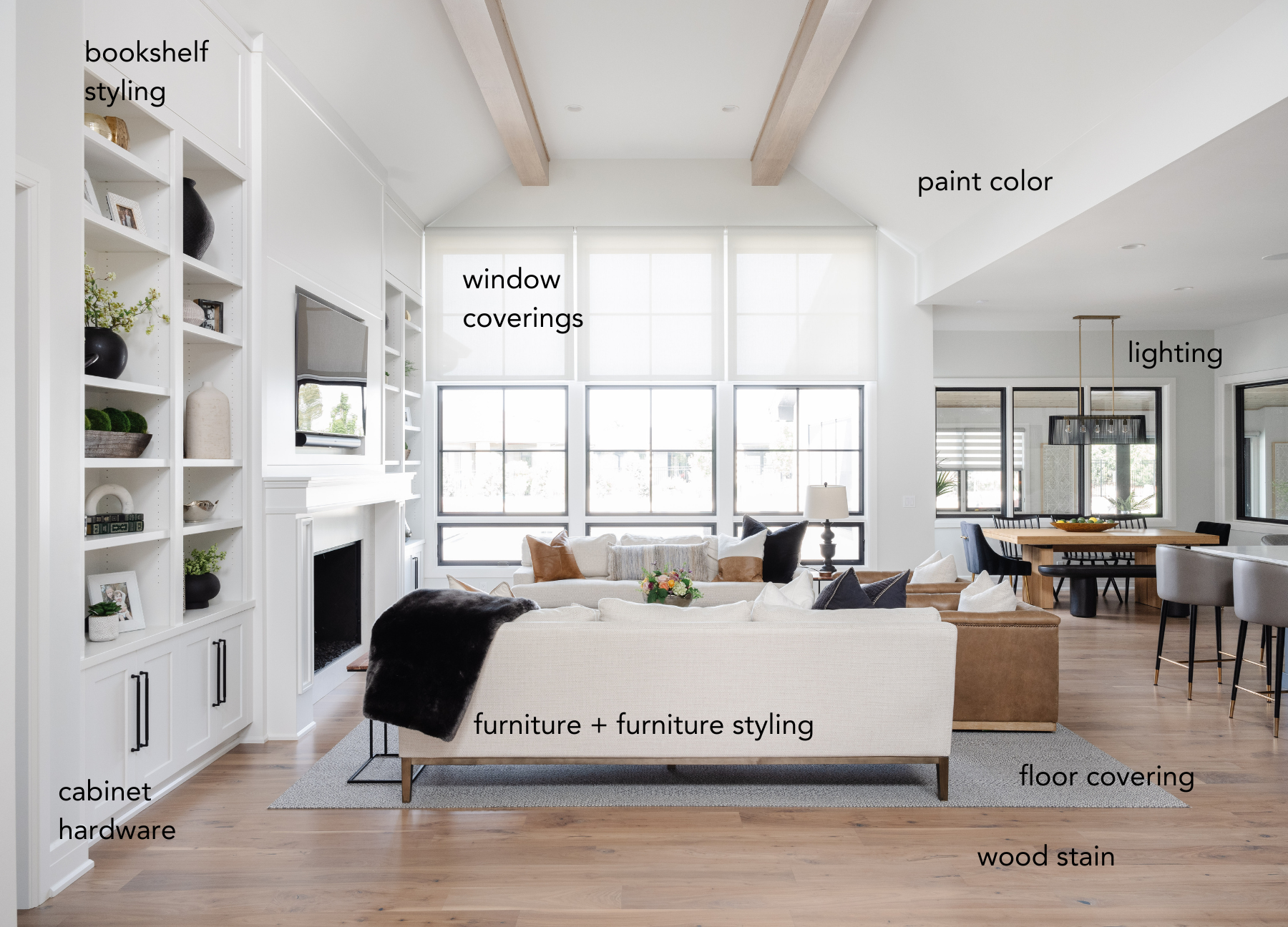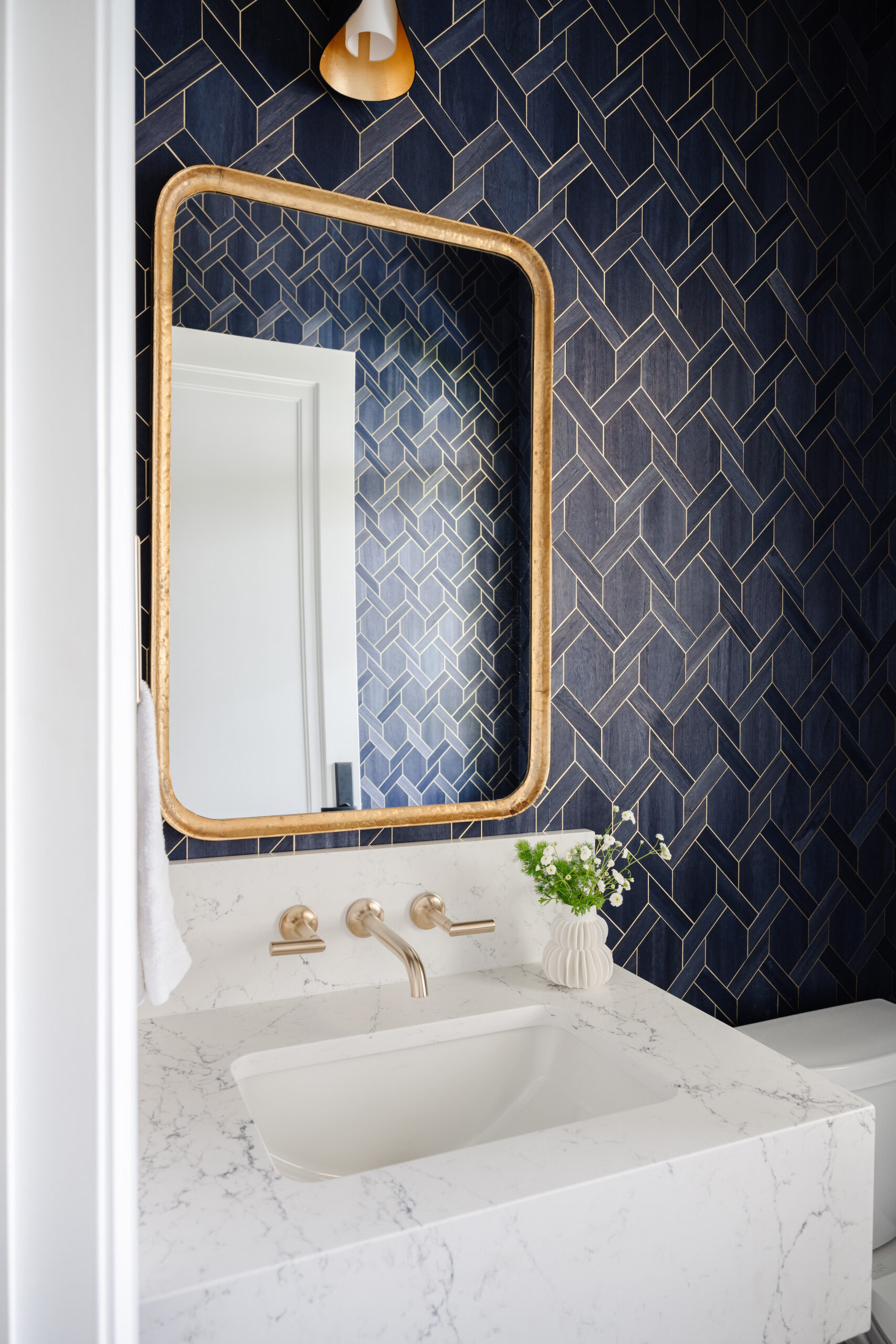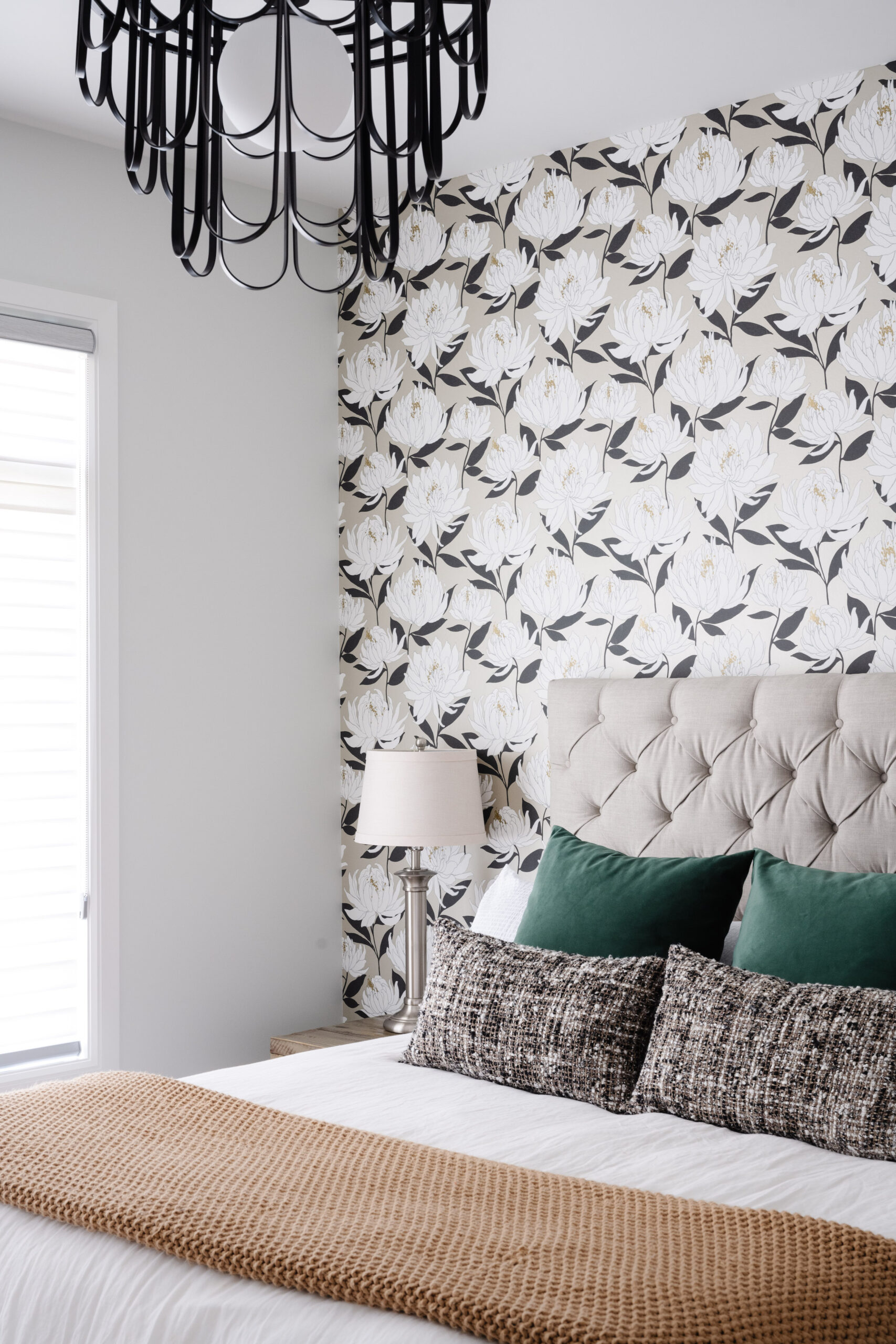
Designers’ Scope of Work Surprises Some
An interior designer’s scope of work goes well beyond picking furniture and selecting finishes. They make things pretty and aesthetically pleasing, but making spaces function well is also a large part of their responsibilities.
“I had a four-hour electrical walkthrough in a new build last week,” Interior Designer Breanna Cortinas said. “This is a big part of what we do.” An electrical walkthrough includes planning the placement for such things as outlet and light switches and specifying lighting height. Planning these details help to make a space function at its best.
Often with new residential or commercial builds, our interior designers touch almost every aspect of the project. In the photo above, Interior Designer Carolyn Kotowski worked with Bloomfield Homes on this 5600-square foot home in Omaha’s Sterling Ridge neighborhood. The client invited her into the project before building plans were complete. After finalizing the floor plan along with the architect, Carolyn selected every finish from hard surfaces to paint colors, floor stains, plumbing fixtures, carpet, cabinet colors and more.

When Carolyn moved back to her hometown of Boston during the build process, Associate Designer Molly Lund took over and assisted with project management and oversaw the home’s completion. She worked with the clients on furniture selection and final layouts. Molly also brought in JH Interior Design’s resident stylist Robyn Zandt to accessorize the main areas of the home including its bookshelves.

Project management is another skill within the scope of work for our interior designers. “We organize, research, hire and schedule sub-contractors,” Designer Dana Wear said. “And we’re the ones who can be on the phone tracking down issues and fixing problems.”
“We also have relationships with the subcontractors,” Breanna chimed in. “We know who to go to for what skill and we know who’s the best in town.”

Relating to an interior designer’s scope of work, Breanna added that sometimes people are shocked by how much time interior designers spend learning about new products. She estimated that as a firm the group probably spends 10 hours per week meeting with reps and researching products. “Most anyone can go to a tile showroom and pick out a tile, but they may not know some products even exist,” she said. “We’re constantly being inundated with new information, the latest trends and the latest technology.”
Breanna said because of this knowledge interior designers are able to help people spend their money wisely. She gave the example of a meeting she had with clients recently. They had already specified white oak beams in their living room and were debating whether to do the same in their basement. “I told them no, we’d save the money, wrap them in drywall and then do a wall covering that emulates the look of white oak. This saved them thousands of dollars,” she said.

Interior designers have a broad scope of work that encompasses both creative and technical aspects to transform interior spaces into functional environments. Designers at JH Interior Design practice these skills while forming meaningful relationships with their clients. We enjoy being part of a project in its early stages and then at the end to add the finishing touches.
A full list of our interior designers’ responsibilities is listed below:
- Space Planning: Interior designers assess the available space and develop layouts that optimize functionality and flow. This involves considering factors such as traffic patterns, furniture placement, and spatial organization to meet the client’s needs and preferences.
- Concept Development: They collaborate with clients to understand their vision, preferences, and requirements for the space. Based on this input, designers develop conceptual designs that reflect the desired style, ambiance, and mood.
- Material and Finishes Selection: Interior designers choose appropriate materials, finishes, colors, and textures to enhance the visual appeal and functionality of a space. They consider factors such as durability, maintenance requirements, and budget constraints while making selections.
- Furniture and Fixture Selection: Designers source and select furniture, lighting fixtures, window treatments, and other accessories that complement the design concept and fulfill the functional needs of the space. They may also customize or design bespoke pieces to achieve a unique look.
- Coordination with Contractors and Vendors: Interior designers work closely with architects, contractors, craftsmen, and vendors to ensure that design plans are executed accurately and efficiently. They oversee the procurement, delivery, and installation of materials and furnishings, ensuring adherence to quality standards and timelines.
- Project Management: From concept to completion, interior designers manage various aspects of the project, including budgeting, scheduling, and onsite supervision. They coordinate with multiple stakeholders to ensure that the project progresses smoothly and according to the established plan.
- Environmental Considerations: Designers may incorporate sustainable practices and eco-friendly materials into their designs to minimize environmental impact and promote healthier indoor environments. They stay updated on industry trends and innovations in green design principles.
- Client Communication and Presentation: Effective communication is essential for interior designers to understand client expectations, present design concepts, and solicit feedback. They use visual aids such as mood boards, renderings, and presentations to convey ideas and ensure alignment with the client’s vision.
- Regulatory Compliance: Interior designers must adhere to building codes, regulations, and safety standards applicable to interior spaces. They ensure that design plans comply with legal requirements related to accessibility, fire safety, and structural integrity.
- Continuous Learning and Professional Development: To stay relevant in a dynamic industry, interior designers engage in continuous learning and professional development activities. They attend workshops, seminars, and industry conferences to stay updated on emerging trends, technologies, and best practices.
- Styling and Finishing Touches: Interior designers use elements such as art, pillows and other accessories to bring a layered look to a home. It’s often these details that give a space a finished look.

0 comments